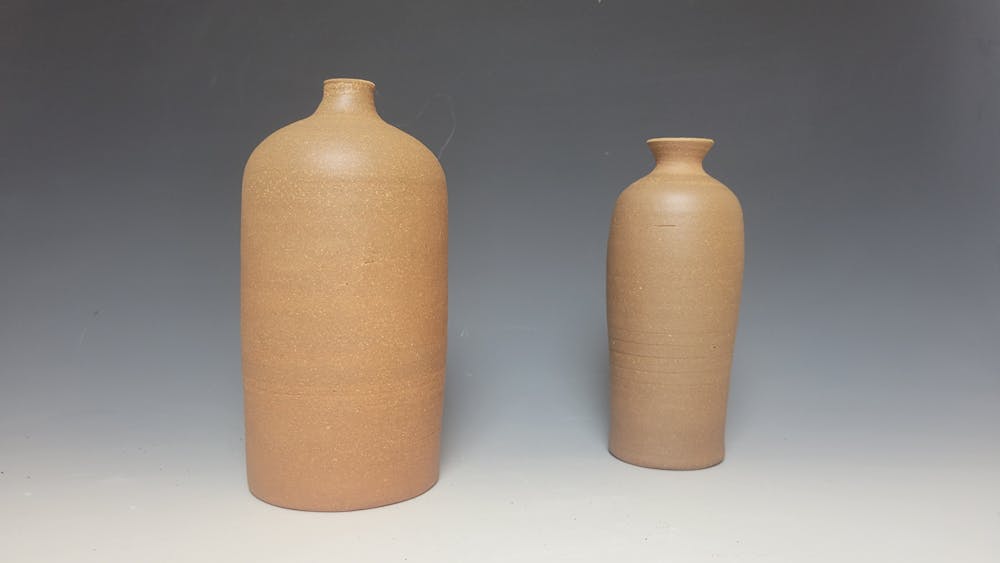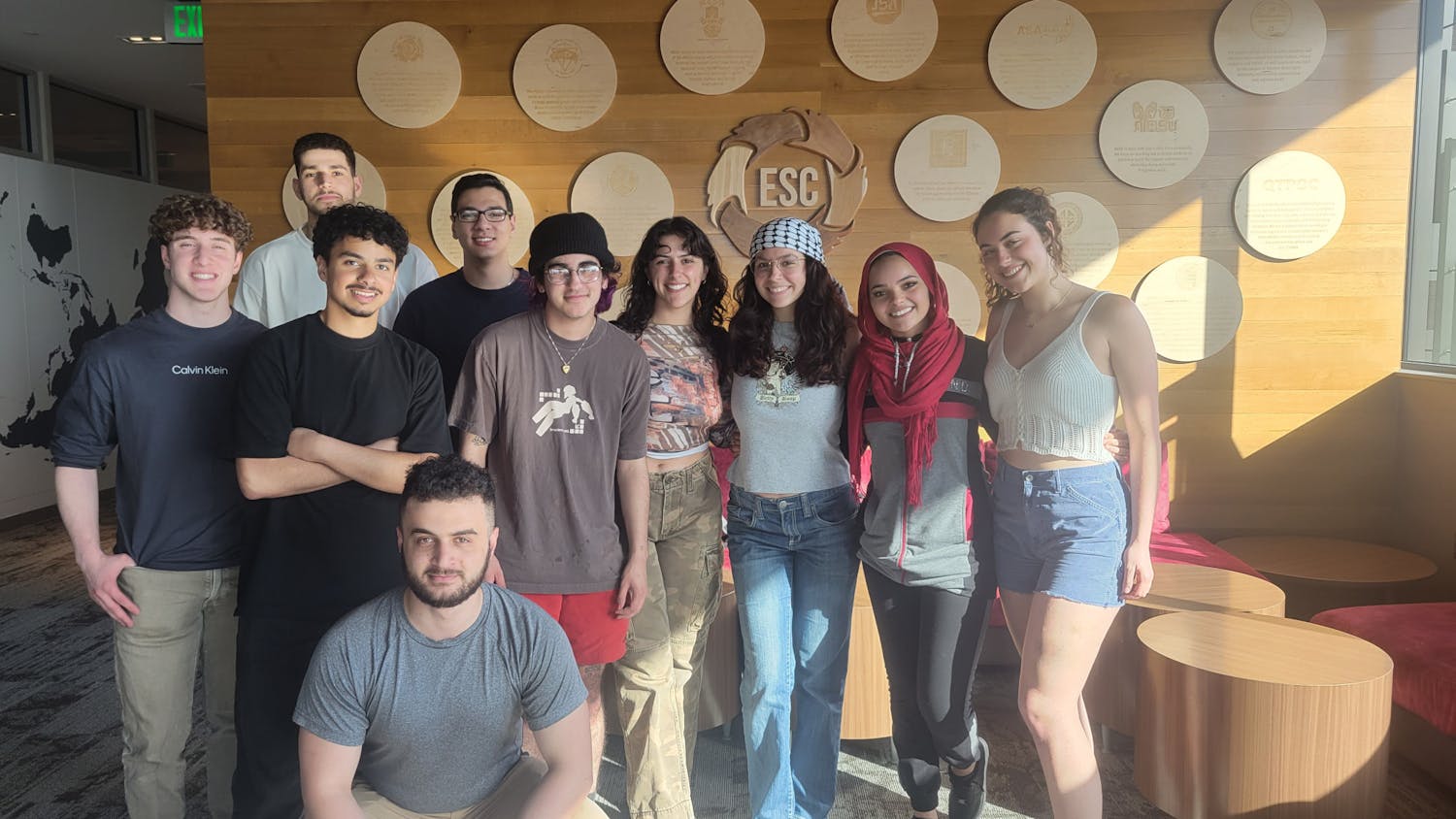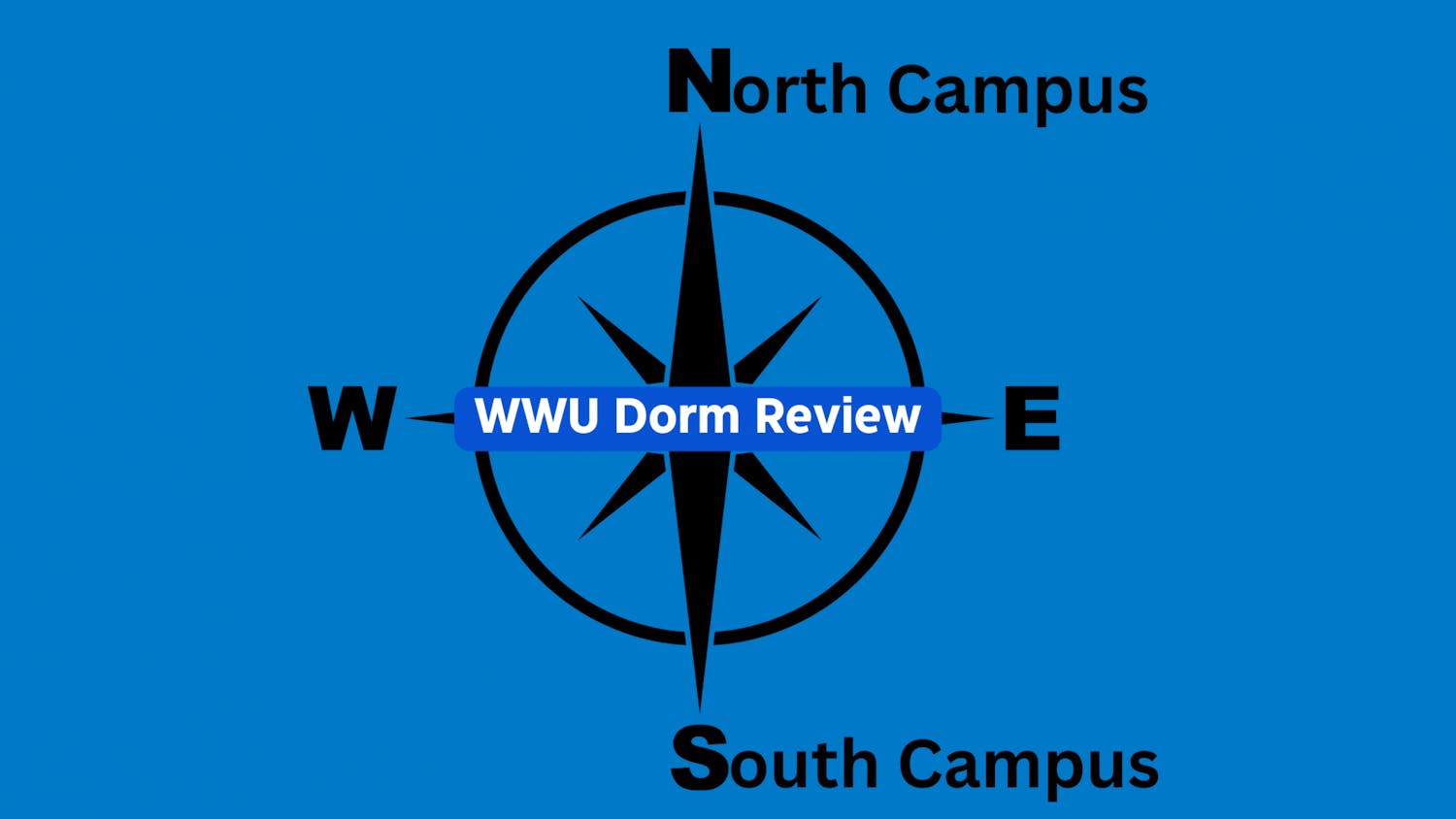The best part of working with ceramics at Western Washington University, according to studio art majors and ceramics club members Gabe Rubanowitz and Kasey Maniulit, isn’t its expansive nature or even the act of creating. Rather, it’s getting to work with Ryan Kelly, the club’s academic advisor.
“He just has so much knowledge and experience and guidance,” Rubanowitz said.
Kelly, who is a full-time faculty member overseeing the ceramics area, has been creating ceramics for about 25 years.
“Before I came here, I did some artist residencies and taught part-time at a bunch of different schools. And then I was looking for a full-time position and this popped up,” he said.
In practicality, ceramics are a group of minerals, clay being a primary one, that transform when heated and can take on functional, industrial, sculptural or decorative forms.
“[Ceramics] has an enormous range of possibilities,” Kelly said.
Rubanowitz and Maniulit both got into ceramics in a similar way: starting with a high school class. Rubanowitz took it as a senior and found himself instantly gripped.
“I was like, ‘I need more of this,’” he said.
Maniulit took ceramics as a sophomore in high school and decided to keep going. He ended up a part of Western’s ceramics club almost by chance.
“I showed up on the first day of one of their orientation meetings just to see what the club is about and they just happened to have enough spots for Gabe and I to join,” he said.
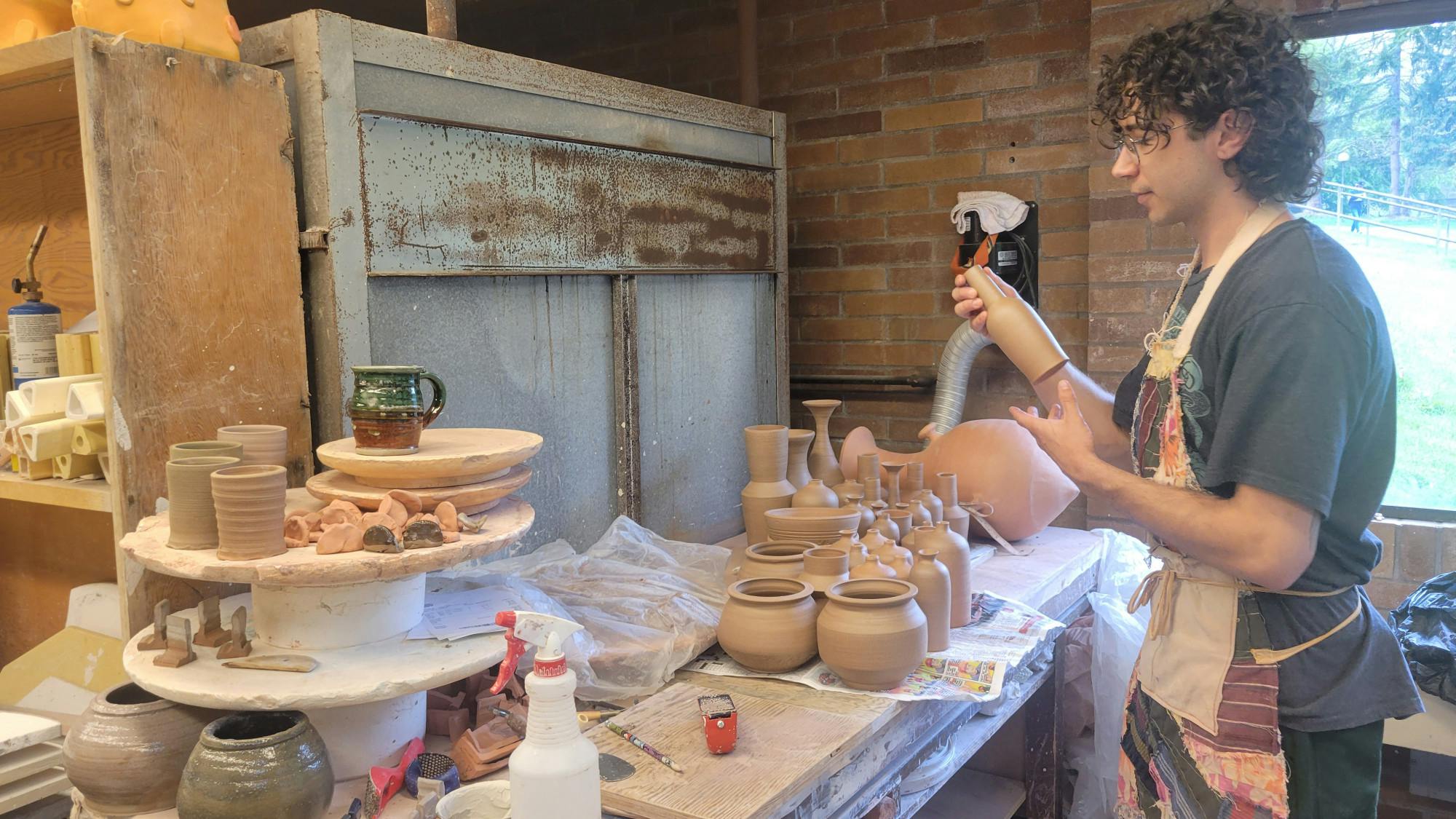
The COVID-19 pandemic halted the club for around two and a half years. Afterward, Maniulit and Rubanowitz, alongside club president Joe Wolf, revamped it and became officers, with Maniulit being vice president and Rubanowitz being treasurer.
The ceramics club is largely made up of people not affiliated with the art department. It exists in part to allow students outside of the program to use their resources. The issue, however, is that those resources are very limited.
“If there was just an opportunity to have more professors in a bigger space, to have a larger capacity of people, it could go really far,” Rubanowitz said.
The capacity for the club sits at around 20 members, which according to the officers and Kelly is already pushing the limit.
“I think within the resources that I have available to me and what the university is willing and capable of directing towards me, we're kind of at capacity,” Kelly said.
A lack of physical space is one problem. The bottom level of the Art Annex, where the ceramics studio is located, is quite small. Kelly’s office is lined with shelves that overflow with items. The area designated for photography is in an odd corner that only one person can enter at a time.
“In order to expand it, I would need a technician. I would need more space,” Kelly said.
Ceramics can be an expensive practice. Wheels, which are used to “throw” or shape the clay, can cost upward of $2,500. Kilns, which are used to heat and harden the clay, can be upward of $10,000. Baker Creek Ceramic Studio manager Brecken Stockmar suggested fundraising, as well as scrapping items that people aren’t especially proud of to reuse the clay, as ways to help offset the cost, but those are only small-scale contributions.
“The biggest thing is trying to encourage people that do have a lot of money to help donate, especially to the school,” Stockmar said.
Due to the sharing of resources and the sometimes laborious nature of the art form, a lot of discussion and collaboration is possible in ceramics.
“A lot of my work recently has come from the suggestions that other people have made,” Maniulit said.
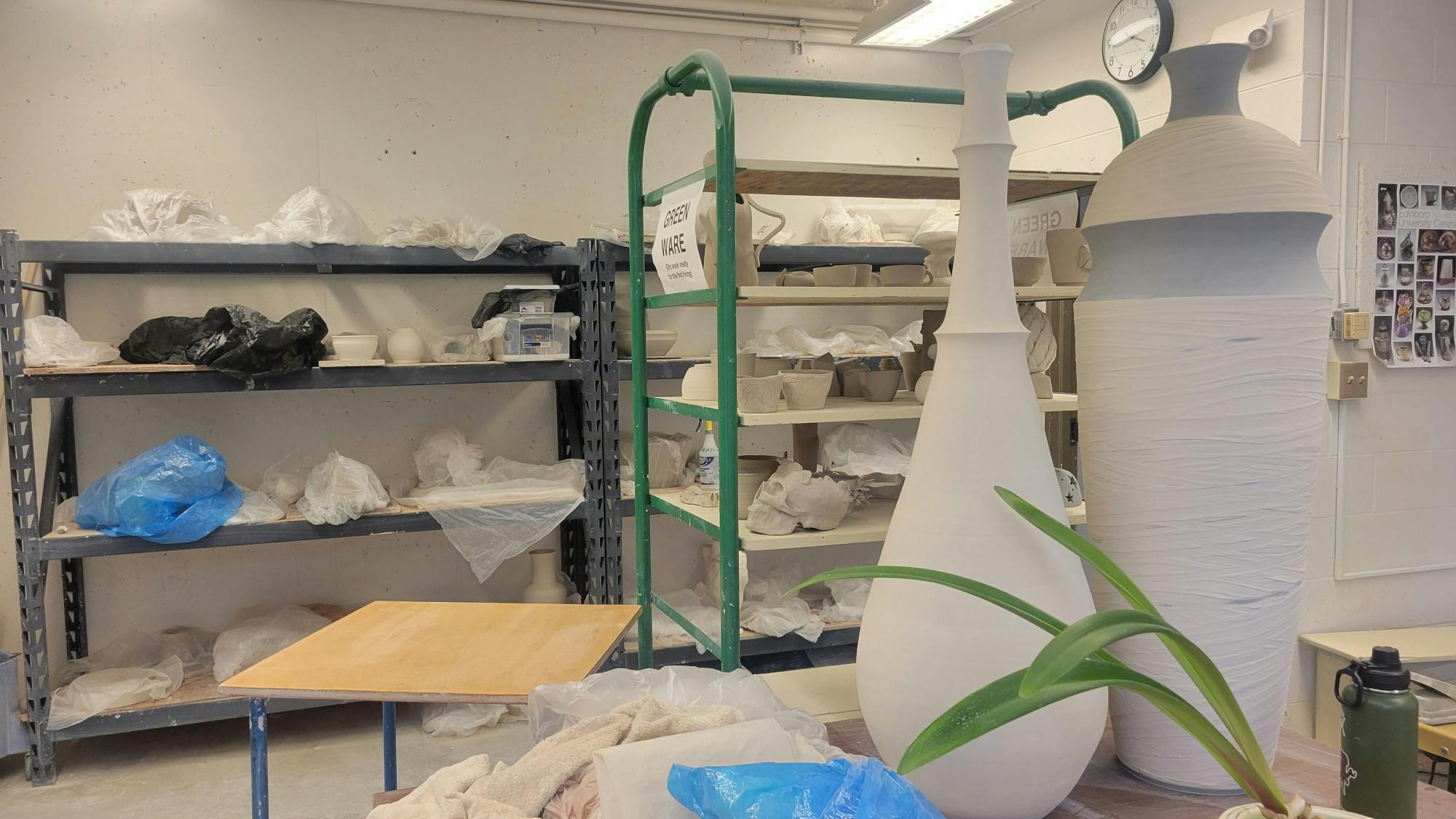
Whatcom County has a lively ceramics scene. On top of Western’s program, there are programs at Whatcom Community College and at local high schools. There’s Baker Creek Ceramic Studio in Bellingham, Burnish Clay Studio downtown, Jansen Art Center in Lynden and a local nonprofit called Whatcom Artists of Clay and Kiln, of which Stockmar recently became president.
Working with clay can connect people in many ways. A person using a handmade piece can imagine the process the creator went through to make it work.
“I think there's something special about eating out of a handmade piece. When you're eating out of something, the artist who made it, they touched every piece of it,” Stockmar said.
It can be therapeutic and a relaxing environment to exist in. Kelly believes that the stress of the pandemic and the depiction of ceramics on social media could be a reason for the increase in interest.
“It might be tied to that kind of mindfulness and the mental health issues that people rightfully were encountering and finding things that are rewarding and calming, which ceramics can be,” he said.
Rubanowitz and Maniulit find themselves comfortable in the studio. They are there for long stretches of time, even when they’re not working on anything.
“This is my, like, second home. I'm here all the time,” Maniulit said.
Despite their love for the program and place, the lack of funding is an issue they are regularly aware of. The space they’re in is compact, there’s talk of lead in the water, and they keep having to turn people away from the club, despite wanting to expand it. More funding for the arts, especially the Western ceramics building, is something they find important.
Kumiko Juker (she/her) is a campus life reporter for The Front this quarter. When she's not checking her email, she enjoys spending time with her friends, writing poetry and accumulating random knowledge. She can be reached at kumikojuker.thefront@gmail.com.


